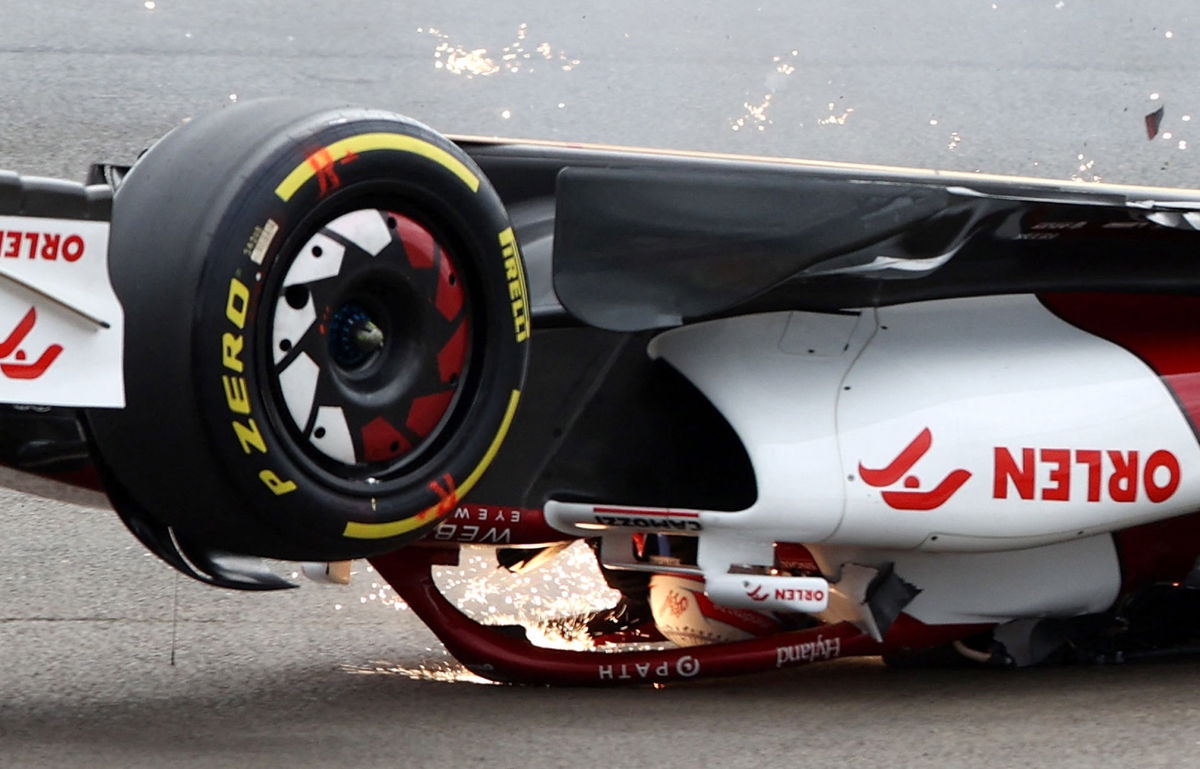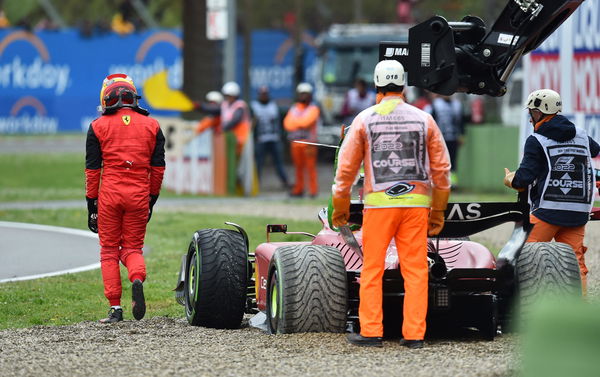
Reuters
Formula One F1 – British Grand Prix – Silverstone Circuit, Silverstone, Britain – July 3, 2022 Alfa Romeo’s Guanyu Zhou crashes out at the start of the race REUTERS/Molly Darlington

Reuters
Formula One F1 – British Grand Prix – Silverstone Circuit, Silverstone, Britain – July 3, 2022 Alfa Romeo’s Guanyu Zhou crashes out at the start of the race REUTERS/Molly Darlington
FIA keeps on updating its rules to ensure the safety of drivers. Several regulations have been introduced in recent years to reiterate FIA’s stand that drivers’ safety is of utmost priority. The most noteworthy change made to the Formula 1 cars lately, despite facing fierce opposition from drivers is the Halo. Ever since its introduction, several crash incidents happened where the Halo played an important role in ensuring the driver’s safety.
Watch What’s Trending Now!
ADVERTISEMENT
One of the best examples for this is when Lewis Hamilton crashed with Max Verstappen last year in Monza. Verstappen’s car leaped high and landed on top of Hamilton’s car. Had the Halo not been there, the accident could have proven to be fatal. Hamilton himself admitted the Halo saved his life.
ADVERTISEMENT
Safety procedures followed after a crash
It is not just the regulations that are brought in to bring changes to cars to ensure drivers’ safety, the medical staff and stewards are trained time after time for safety protocols to follow after an incident.

Reuters
Formula One F1 – Emilia Romagna Grand Prix – Autodromo Enzo e Dino Ferrari, Imola, Italy – April 24, 2022 Ferrari’s Carlos Sainz Jr. after he crashed out of the race REUTERS/Massimo Pinca
In a YouTube video by Matt Amys, F1 Content Creator, we get to see a mock drill on how the safety team extracts an injured driver from an F1 car. In the demonstration video, Martin Hunt, a Safety Team rescue crew member, talked the viewers through the protocols they follow. He said that after the crash, the approaching safety staff makes sure whether the driver is in any sort of pain. In the video, after making sure that the driver could remove his helmet, gloves, and balaclava, the rest of the extraction procedure started.
ADVERTISEMENT
Read More: How Does the Super License System Dictate the Fate of F1 Drivers?
Top Stories
Who Is Oscar Piastri’s Father, Chris Piastri? Co-Founder of Multibillion Dollar Automotive Company

Little Fan Makes “Super Important” Charles Leclerc Wish With a Promise to See Him at the Italian GP

Who Are Lando Norris’s Parents? Meet Adam Norris and Cisca Wauman

Carlos Sainz Debunks Biggest ‘Smooth Operator’ Myth After Its Return at Australian GP

Lawrence Stroll’s “Last Attempt” for Adrian Newey Will Come With $4 Million Project Debut, F1 Pundit Suggests

The safety team removed the horseshoe head protection. Following that, they fastened the driver to the seat with the help of straps. After this, they fastened the driver’s arms and knees together to make sure that they don’t hit the Halo. Then, they secured the driver’s head so that it doesn’t move too much and aggravate the situation in case the driver has a concussion. After that, they placed the driver on a board resting over the Halo. Once everything has settled, they moved the driver on a stretcher.
ADVERTISEMENT
Recent safety measures introduced by the FIA
FIA introduced accelerometers in drivers’ earpieces to gather data on the amount of force that a driver faces in the car. The accelerometers were incorporated in 2014. FIA brought in driver-facing cameras in 2016 to see what happens in a cockpit during a crash.
Watch This Story: Most Dangerous Crashes in F1 History
ADVERTISEMENT
The super license regulations were revised in 2016 as well. Halo and biometric gloves were introduced in 2018. The most recent safety measure came in 2021 after Romain Grosjean’s crash. The FIA brought in gloves with better fire-resistant qualities.

Reuters
Formula One F1 – Sakhir Grand Prix – Bahrain International Circuit, Sakhir, Bahrain – December 3, 2020 Haas’ Romain Grosjean arrives to thank marshals ahead of the Sakhir Grand Prix REUTERS/Hamad I Mohammed
Formula 1 has seen some horrible crashes. Hence, the constant endeavor to make it a safer sport is always a welcome change.
ADVERTISEMENT
ADVERTISEMENT
ADVERTISEMENT
ADVERTISEMENT

